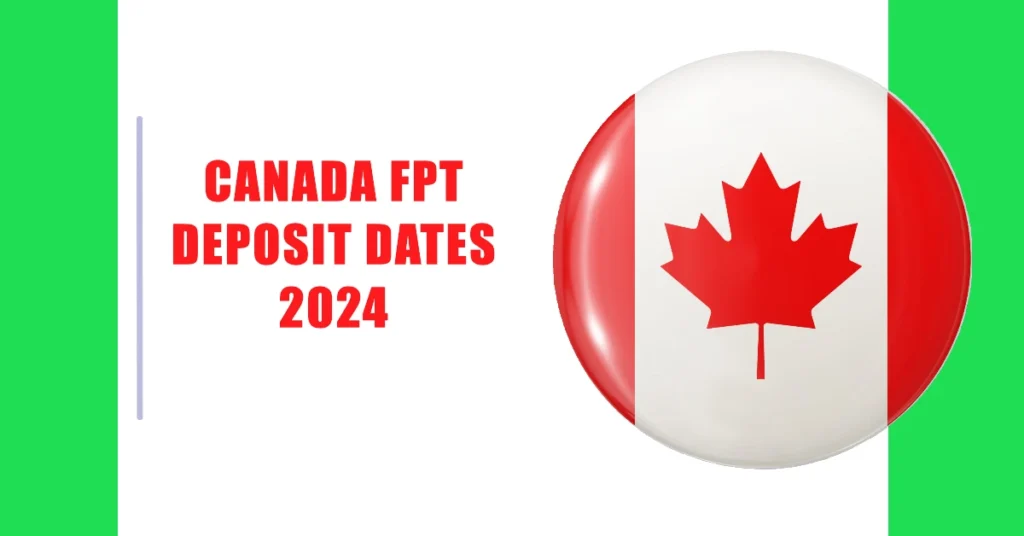The Canada FPT deposit may have appeared in your bank account, leaving you wondering what it means and whether you qualify. These deposits are government payments aimed at providing financial support to Canadians through various tax credits and benefits. The “FPT” stands for Federal-Provincial/Territorial, signifying that the funds come from a collaboration between Canada’s federal and provincial/territorial governments.
Table of Contents
In this detailed article, we’ll break down what the Canada FPT deposit is, the types of payments it includes, who qualifies for these deposits in 2024, and when to expect them.
What is the Canada FPT Deposit?
The Canada FPT deposit refers to the payments issued by the federal or provincial governments for various programs, such as tax credits, rebates, and benefit payments. These deposits are part of a coordinated effort between the Canadian government and the provinces/territories to assist individuals and families with their financial needs.
Rather than the payment listing a specific benefit program (like GST/HST credits or child benefits), the FPT deposit is a general term used in banking descriptions when these amounts are deposited into your account. It can include payments such as:
- GST/HST Credit
- Canada Child Benefit (CCB)
- Provincial tax credits
- Climate Action Incentive Payment (CAIP)
- Other provincial rebates or benefits
Who Qualifies for Canada FPT Payments in 2024?
Eligibility for Canada FPT deposits depends on the specific program or benefit the payment relates to. Here are some of the key programs under which you may receive a Canada FPT deposit and their qualification criteria:
1. GST/HST Credit
The Goods and Services Tax (GST) / Harmonized Sales Tax (HST) Credit is a quarterly payment issued to low- and moderate-income individuals and families to offset the sales tax they pay.
- Eligibility: To qualify for the GST/HST credit, you must be a Canadian resident and file your taxes. Your eligibility is based on your family income, marital status, and the number of children in your household.
- Payment Dates: The GST/HST credit is typically paid in January, April, July, and October.
2. Canada Child Benefit (CCB)
The Canada Child Benefit (CCB) is a tax-free monthly payment to help families with the cost of raising children under 18.
- Eligibility: To qualify for the CCB, you must be a Canadian resident and have primary responsibility for the care of a child under 18. Your family’s net income determines the amount you receive.
- Payment Dates: Payments are made on the 20th of every month.
3. Climate Action Incentive Payment (CAIP)
The Climate Action Incentive Payment (CAIP) provides Canadians with a rebate to help offset the cost of the federal carbon tax in provinces without their own carbon pricing systems.
- Eligibility: If you live in Ontario, Manitoba, Saskatchewan, or Alberta, you may qualify for the CAIP. The amount varies based on your location and household size.
- Payment Dates: The CAIP is distributed quarterly.
4. Provincial Tax Credits
Several provinces offer tax credits to residents based on their income, living situation, or energy use. These credits are usually issued as part of the FPT deposit.
- Eligibility: Each province sets its own eligibility criteria for tax credits. For example, Ontario offers the Ontario Trillium Benefit (OTB), which includes energy and property tax relief.

How Much Can You Receive with FPT Deposits?
The amount you receive through a Canada FPT deposit depends on which benefit or tax credit you qualify for and your personal or family financial situation. Here are a few examples of typical payments for 2024:
- GST/HST Credit: Payments range from $467 annually for single individuals to $612 for families with children.
- Canada Child Benefit (CCB): The maximum annual benefit for the CCB is up to $7,437 per child under 6, and up to $6,275 for children aged 6 to 17.
- Climate Action Incentive Payment (CAIP): For 2024, a family of four in Ontario can receive up to $976, while families in Alberta can receive up to $1,544.
$1,502 Monthly CPP Increase for Canadian Seniors: Eligibility & Deposit Dates
1200 Month for Retired Seniors Know Eligibility Payment Dates Fact Check
$1,200 + $1,200 Extra OAS Deposit for Seniors: Eligibility & Payment Dates
$2,902.34 Monthly Income OAS Benefits for Senior Couples in Canada
$1,400/Month Extra OAS for Seniors in Canada? Everything You Need to Know
How to Check Your Eligibility for FPT Deposits
The easiest way to check whether you qualify for FPT deposits is by ensuring that you file your annual income taxes, as most benefit eligibility is determined by your net family income reported on your tax return.
Steps to Verify Your FPT Payments:
- Check Your CRA Account: Log into your My Account on the Canada Revenue Agency (CRA) website. There, you can view all scheduled payments, benefit entitlements, and detailed breakdowns of your FPT deposits.
- Bank Statements: If you see a Canada FPT deposit in your bank account but are unsure which payment it is, check your CRA account or contact the CRA for more information.
- Provincial Government Websites: For provincial-specific benefits like energy rebates or tax credits, check your local government’s official website for updates and eligibility criteria.
The Canada FPT deposit is an umbrella term used for multiple federal and provincial benefit payments, and in 2024, it continues to support Canadians through various financial aid programs. If you qualify for tax credits like the GST/HST credit, the Canada Child Benefit (CCB), or the Climate Action Incentive Payment (CAIP), be sure to monitor your CRA account and ensure your tax returns are up to date to maximize your benefits.
With payments scheduled throughout the year, the FPT deposit provides valuable financial support to millions of Canadians, helping with everyday expenses and providing relief through important government programs.
